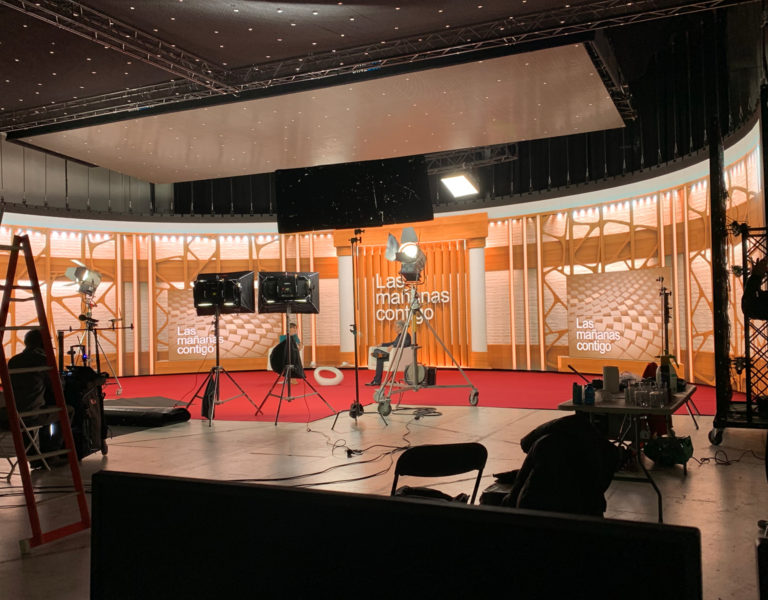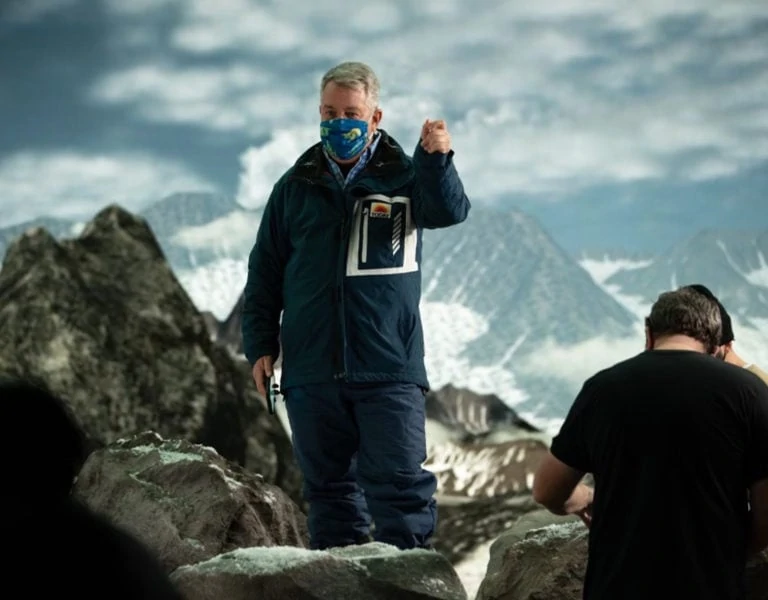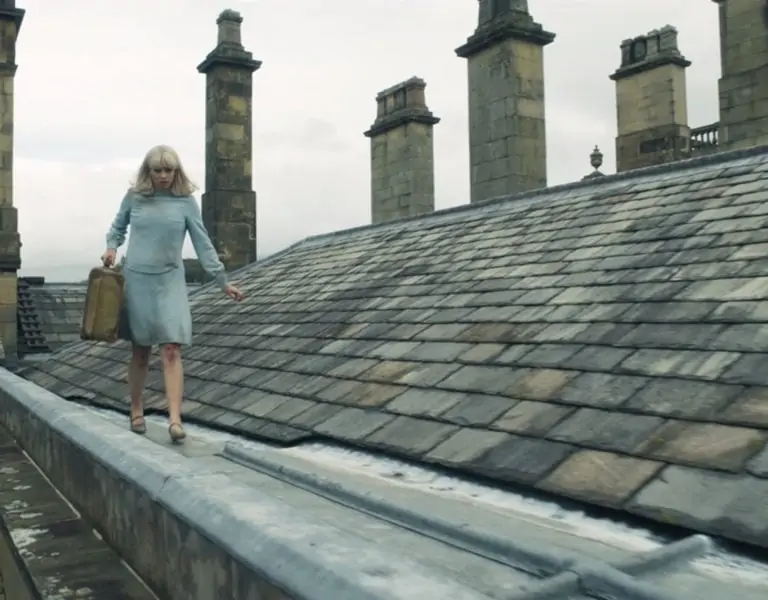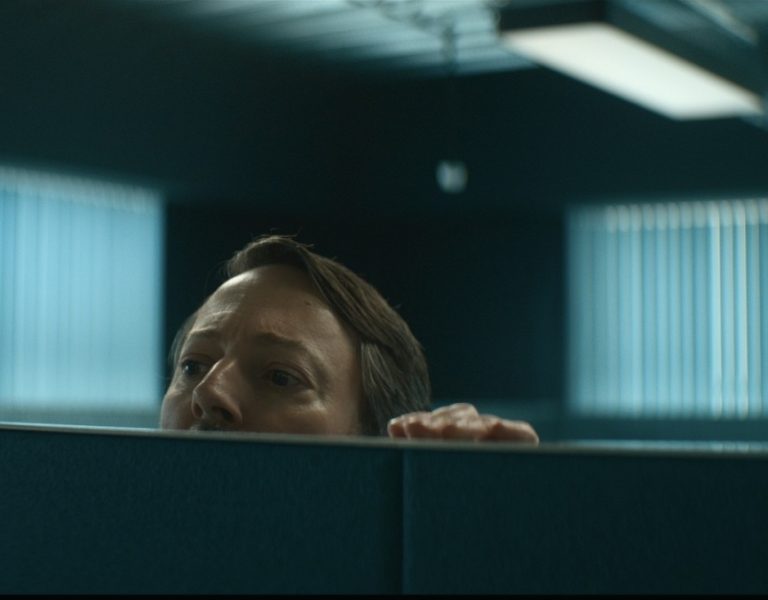Killer instinct
Shane Kelly reteams with Boyhood collaborator Richard Linklater for a screwball comedy based on an astonishing true story.
A 2001 article in Texas Monthly by journalist Skip Hollandsworth about a deadly contract killer with surprising allegiances inspires Richard Linklater’s latest film. Hit Man premiered at Venice Film Festival before being snapped up by Netflix in Toronto, and is set to show as a Special Presentation at the BFI London Film Festival on 6 October. Long-time Linklater DP Shane Kelly shares a fascinating insight into their working relationship and how they developed the visual language for Hit Man.
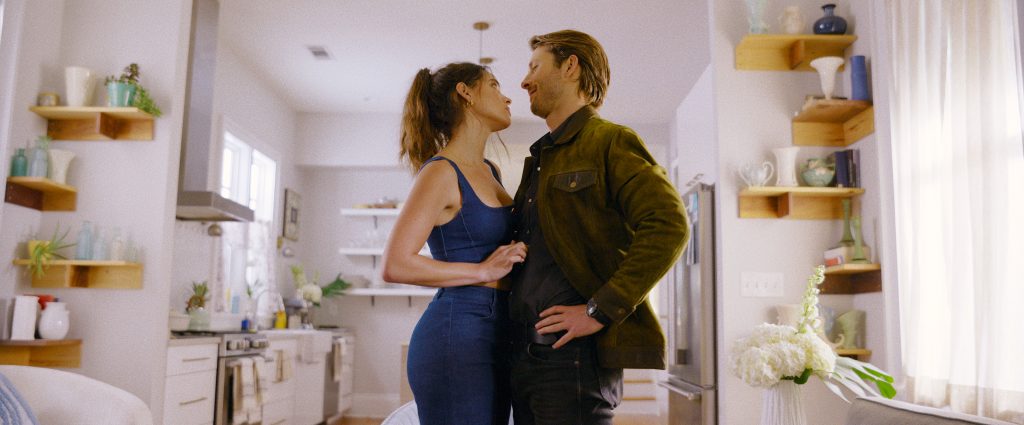
How did you get involved with Hit Man and what appealed to you about lensing the film?
The project first came to me in January 2022 and was going to be shot in Houston, Texas, which is where the real Gary Johnson operated. The article from Texas Monthly magazine on which the character is based was so intriguing, and Rick (Linklater) and Glen (Powell)’s script was such a good read that I jumped at the chance to shoot it. The movie, however, was put on hold due to financing and we eventually ended up in New Orleans seven months later with a fraction of the original budget.
Tell us about your collaboration with Richard Linklater and what makes it so successful. How did you first start working together?
We first started working together as DP and director on A Scanner Darkly in 2004 (released 2006). It was a project unlike anything I’d done before, shooting on mini DV Panasonic cameras with the knowledge that it was all going to be painted over. I learned quickly that Rick wants a space lit so that he has the freedom to move his actors within that space and the time to work on their performances. As a young DP, you set out to impress and that can sometimes get in the way of the story, in the sense that you eat into the director and actors’ time to finesse their craft. To be able to work quickly and manage your time efficiently is an essential skill in filmmaking, especially low-budget filmmaking.
After A Scanner Darkly, I moved up from operator to DP on Boyhood and after that success we continued to collaborate. Rick tends to use the same heads of department once he finds the right one, so I’ve been able to work with the same production designer and assistant director on many of his shows. This leads to a knowledge on what he is looking for and a shorthand between the departments. We are encouraged to interpret the story our way and I think that’s the success of our relationship: he trusts me to give him what he needs and I trust him to let me know what he doesn’t like.
What was Richard’s vision for Hit Man’s visual language and what new ideas and perspectives did you bring to the table?
We actually talked more about the look of this movie than maybe any other. His directions can sometimes be designed to make you go off and think, “What the hell does he mean by that?” So when Rick said, “I want a sunlit noir but with a Chinatown vibe but it’s also a screwball comedy,” then you’ve got some work to do.
We determined early on that a moving camera was a big part of the visual language. Once the story gets going, it was important to bring the viewer along with Gary as he tries to hold his double life together so Steadicam and dolly were in use constantly. There’s even a zoom in there as a little Robert Altman The Long Goodbye nod.
Sometimes the locations determine the look and being able to fit your ideas into a location that’s maybe not perfect is part of the fun. All of the locations in Hit Man are practical and it’s important to be adaptable in translating what we had in our head in prep versus what we are presented with on location. Madison’s house, for example, was a 12-feet-wide typical New Orleans “shotgun” house with windows down both sides and not much space between the houses to put lights. We ended up putting HMIs on the ground outside and bouncing them into ultra bounce or mirrors in order to get the desired fall-off in the room.
Something else that we had to deal with is that the roads in New Orleans are extremely bad, so our car sequences were going to be a major issue. If we put the car on a process trailer with the sides out and the cameras on that trailer we were going to be limited in where we could drive, not to mention get rattled to death. So, we kept the car on the trailer, didn’t extend the sides and shot everything from a 20-foot telescoping crane with an isolation head mounted on the tow vehicle. This allowed us to remotely move around the car from outside and get all of our angles in a short space of time without re-rigging cameras.
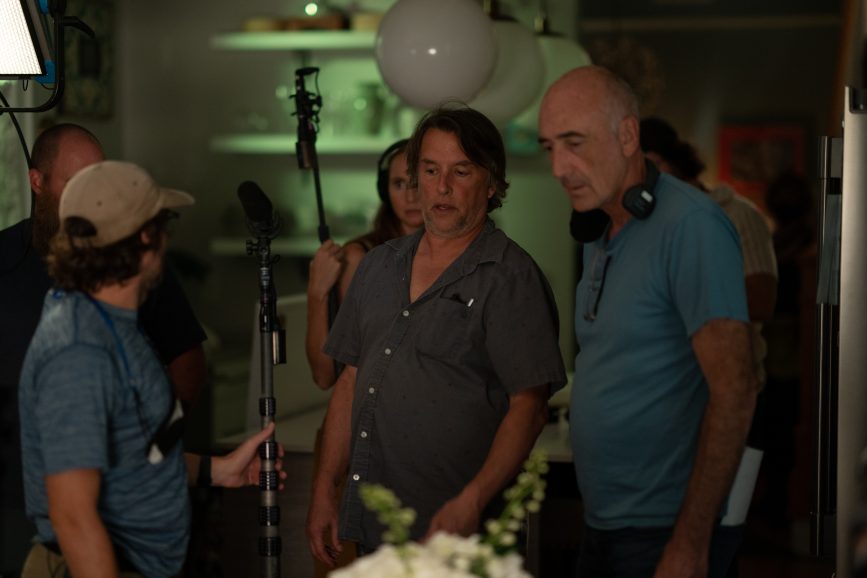
Take us back to prep. Can you break down your process for us?
A lot of early prep is involved in finding the right crew. I’ve been working with Rick for a long time now and having a chill set is important to both of us. I look to hire people that still haven’t lost their enthusiasm for the job; long days on set can wear us all down but the right people can support you and also push you to finesse your work when the going gets tough. Lots of prep is just finding the crew, deciding on the camera and other equipment and figuring out how to shoot a movie in 30 days. You’re always thinking about how to accomplish a shot or put together a sequence and bring together all the moving parts in order to make that happen. Hopefully by the end of prep you have the movie in your head and it’s a matter of putting that on the screen. It doesn’t always work that way but the more that you’re prepared, the easier it is to deal with issues that come up. The first day on set is always a relief because now you’re not on your own anymore and have the support of your crew. It’s where you have no prep time anymore and are reacting to the situations and issues that every day brings. That’s the part that I love.
What creative references did you and Richard exchange for the look for Hit Man?
I’d say that Chinatown was one that kept coming up but the creative references were just a starting point and getting into the soul of New Orleans, not the bourbon street New Orleans but the underbelly of the city, was far more important than what has been shot before. How do you shoot a noir with very few night-time scenes? There’s not a lot of references for that so you have to come up with your own ideas rather than referencing what has gone before.
Can you run us through the key locations? How involved were you in scouting?
Madison’s house was a key location, we were there for five days or so. It was a difficult one because of the size of the location but it’s what was chosen so we made it work. I was involved in location scouting as soon as I got to New Orleans and was able to voice my opinions of the viability from a cinematography point of view. Some I won and some I lost.
When was principal photography and how many days did it last for?
We shot for 30 days so it was full speed ahead every day.
What camera did you use and why?
Because we had a lot of small locations I went with the Sony Venice so I could use the Rialto. We always had two cameras, one Venice 1 with the Rialto built all of the time and a Venice 2 with 6K sensor that switched between Steadicam and dolly.
We had originally wanted to shoot on film so I went to Panavision New Orleans to do tests. Due to budget I would have had to shoot 2-perf and this would have given us a great gritty look, but in the end it was a bond company decision as we were headed into hurricane season in New Orleans and they didn’t want to take the risk of going over on days and budget. Kodak were very on board to make this happen but unfortunately it wasn’t to be.
The Rialto did allow me to shoot in places that I wouldn’t have been able to put a film camera so it worked out well in the end. I stayed with Panavision for the digital kit. I shot full frame with a 2:35 crop.
What lenses did you use and why? Did you use any filtration?
I used Panavision Primo 70s and a couple of large format zooms. I didn’t use much filtration as the Primos look great on their own. Sometimes just a 1/8 or 1/4 black Pro-Mist to help some situations.

What was your approach to camera movement?
We decided early on to always have the camera moving whether it was dolly, Steadicam or slider, always moving to give a dynamism to the character of Gary/Ron.
What was your approach to framing and composition?
Since we’re dealing with a character who changes into someone else or at least plays someone else it was important to mirror this character development with a change in framing and composition. In the early scenes of Gary at home before his life changes, the framing is very symmetrical and orderly, but as the story develops and his life starts go get out of control, we go along with him for the ride, using dolly, Steadicam and crane work, always moving with him and taking the viewer with us.
Did you use any new tools or techniques on this shoot?
I’ve been using a lot of LED fixtures recently on interiors and a favourite of mine is the Aputure series of LEDs. The dimming capacity and ability to put a lot of accessories on it lends itself to a fast-paced shoot. I also used SkyPanels and LED tubes a lot: everything was controlled by an iPad so it allowed us to move quickly.
Who was your gaffer and what was your overall approach to lighting Hit Man?
Mike McLaughlin was my gaffer and Nick Nicolay was my key grip and I couldn’t have done it without them and their amazing New Orleans crew. The approach was that of a “sunlit noir”. As much as I would have loved to approach it as a traditional noir, the film is a comedy, albeit a dark one but it’s also a romance and also takes place mostly in daylight. So, you have to embrace what the movie wants to be rather than forcing a style which doesn’t fit the narrative.
I was able to go further with the scenes in which Gary is playing another character as lighting in these scenes fits with what the client believes the hitman should look like. With the scenes of Gary and Madison together, especially their first meeting, we wanted the audience to fall for her as much as Gary does so the lighting is a little less naturalistic and more flattering than normal.
Lighting kit came from Quixote Lighting in New Orleans.

What was the trickiest scene or location to light and why? What fixtures did you use to achieve your vision?
Trickiest scene for sure was the surveillance van interiors. Three or four people in a small van with heavily tinted-out windows is not fun. I ended using a combination of small LED units inside and 4K HMI units pounding through the windows. Just getting a camera position in there was a challenge but the Sony Rialto helped immensely with this.
Who did the grade and what was their brief?
Corinne Bogdanowicz at Light Iron in Los Angeles was the colourist. I have worked with her on several movies now and she knows my and also Rick’s aesthetic. I made her aware of the comedy aspect of the film but also the noir/love story and let her work on her own for a couple of days until I joined her.
Unfortunately I had to do a remote colour session so it was not ideal for me but Corinne did a great job as always and we only had to go back once to tweak some scenes.
What are you most proud of from your work on Hit Man?
I love the sequence in the diner when Gary/Ron and Madison first meet. It’s not an amazing one in terms of cinematography but it is right for a very important scene and showcases the electricity between these two characters and I love watching it every time.
What lessons did you learn from the shoot that you’ll carry with you onto your next project?
I learned never to shoot four people in a van. Seriously, I learned over the years to surround yourself with good people who have passion and you’ll not only have fun but create something where that energy shows on the screen.
What’s next for you?
Well, about a month after we wrapped Hit Man, my wife, Summer, and daughter, Finn, moved to London from Texas. I’m originally from Northern Ireland and wanted to be closer to my family in London and Ireland and also to explore more UK and European projects. So far we are loving it here.
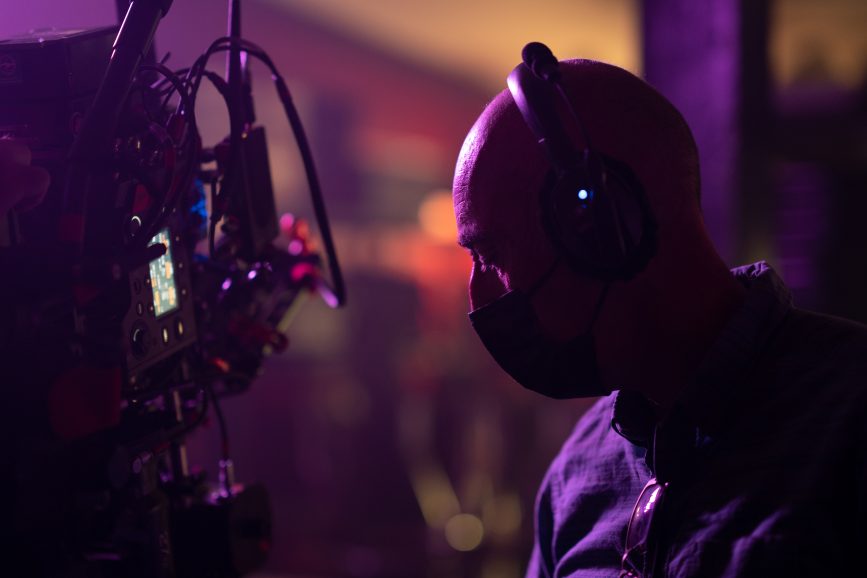
Are there any team members not already mentioned that you’d like to highlight?
It’s tough to single people out but my camera crew was so good. Josh Pickering who shot Steadicam and also operated is so great. I worked with him on a really low-budget horror movie that we shot during lockdown in Texas and had to bring him with me to New Orleans. I’ll always be thankful for the art department as well. I’ve worked with Bruce Curtis (production designer) and Rodney Becker (art director) for a long time now and they always give me something great to shoot. The uncredited part of my team is my wife and daughter as they put up with and support me in the business that I’m in.
Hit Man is playing as a Special Presentation at the BFI London Film Festival in partnership with American Express on 6 October 2023.
